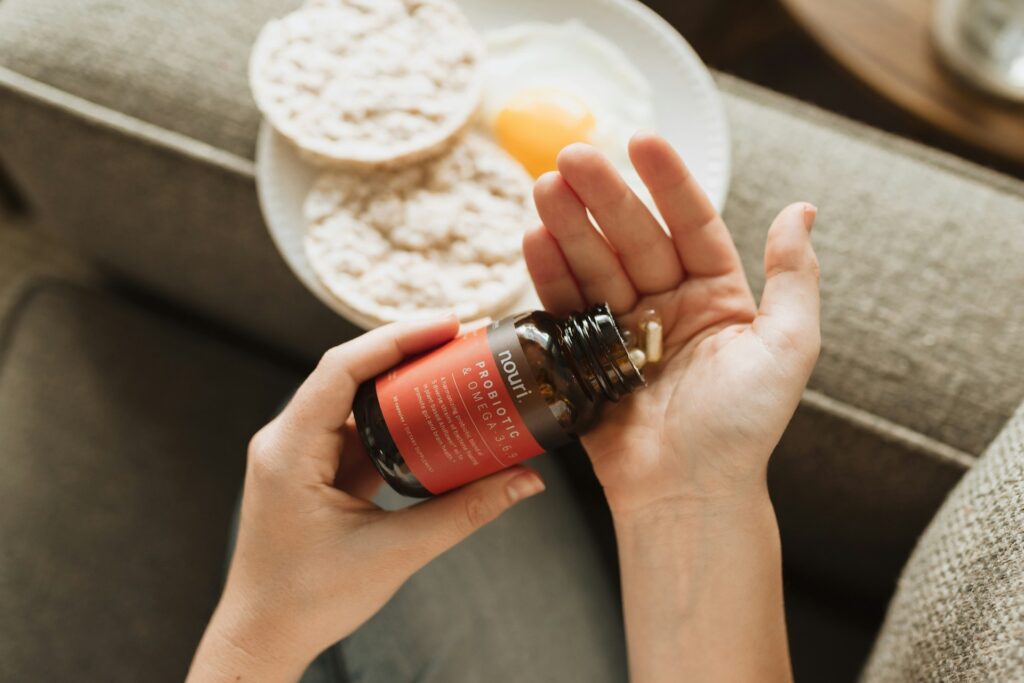
Body + Mind is reader-supported. We may earn an affiliate commission when you buy through some of the links on our site.
Have you ever gone to the bathroom and smelled something fishy from your nether regions? You could have symptoms of bacterial vaginosis.
The condition is more common than you think and is nothing to feel embarrassed about. Fortunately, it’s treatable and curable if you mention it to your doctor.
The following is a helpful guide to teach you about bacterial vaginosis, why you might get it and ways to treat it. Additionally, you will learn how to prevent future cases with healthy lifestyle habits.
Like gut health, your vaginal microbiota may fall out of balance. Bacterial vaginosis is the most prevalent vaginal infection in women, stemming from a bacterial imbalance of Lactobacillus in the vaginal microbiome. When left unaddressed, it may negatively impact reproductive and overall well-being.
Bacterial vaginosis may be transmitted from one person to another during sexual activity. Your chance of having it increases when you don’t use condoms properly or have several sexual partners.

Anyone born with a vagina can develop bacterial vaginosis— although it rarely occurs in those who are not sexually active. In fact, 35% of the female population between 15 and 44 will get it, while cases are even higher among Black women.
Common risk factors for bacterial vaginosis include the following:
Women who have bacterial vaginosis are also more vulnerable to sexually transmitted infections (STIs) like HIV or gonorrhea. Furthermore, people living in areas without adequate access to health care services are also more prone to it.
Some people have symptoms of bacterial vaginosis, while others do not. Often, these symptoms present themselves as:
If you experience the above signs after sex with a new partner or multiple people, or believe you may have a yeast infection, it is likely bacterial vaginosis.

Don’t be shy if you suspect you have symptoms of bacterial vaginosis — women worldwide seek treatment for it daily. However, don’t wait — the sooner you visit your doctor for proper medication, the better.
At your appointment, your doctor will discuss your sexual and medical history with you and conduct an exam to look for vaginal discharge. They will also take note of any odors from vaginal fluid. Doctors often test for a pH level over 4.5 with a sample of discharge to detect an infection. Other lab tests are also available to check for the condition.
Once tests and analyses come back, the doctor will treat the condition accordingly. Typically, you will be prescribed metronidazole, an antibiotic that also comes in a gel form. Clindamycin and tinidazole are other common prescriptions that get rid of bacterial vaginosis.
Because the risk for STIs is so high with this infection, your physician may decide to test you for other diseases like gonorrhea, chlamydia, mycoplasma genitalium and trichomoniasis simultaneously.
Doctors haven’t figured out why or how bacterial vaginosis occurs. However, not all hope is lost. People with vaginas can still take preventive measures to prevent future cases. Here are six approaches to a healthier vagina.
For as tempting as it is to get rid of the fishy smell with luxurious scrubs, it’s essential to keep your external genitals clean with warm water only. The fewer products you use — including soaps and scented items — the better for vaginal health. Likewise, those with a menstrual cycle should change their pads and tampons every six hours, even if their flow is light.
Medical experts warn against douching, as it can alter the vaginal flora — healthy bacteria — and natural acidity. These good bacteria protect the vagina from infections, including bacterial vaginosis and yeast infections. Douching might also push an existing infection upward into the uterus, ovaries and fallopian tubes, leading to pelvic inflammatory disease (PID). PFD is a serious condition causing severe cramping, bleeding and frequent urination in women.
Always use condoms or other protection when having sex. For one thing, contraceptives help prevent unwanted pregnancy and reduce your risk of STIs, both of which may increase your chance of developing bacterial vaginosis.

Probiotics may help restore your vagina’s natural pH levels to prevent symptoms of bacterial vaginosis. It also replenishes Lactobacillus strains — the primary bacteria for vaginal health.
Physician’s Choice Vaginal Wellness Pro probiotic is a tried-and-true product comprised of a 3-in-1 formula — probiotics, prebiotics and cranberry extract. Cranberry extract, in particular, supports the urinary tract to prevent uncomfortable infections.
The vH Essentials vaginal-targeted probiotic is a cost-effective alternative with similar benefits. Just two capsules with water daily can improve your vagina’s good bacteria and fight bacterial vaginosis.
Stay comfortable by wearing breathable cotton underwear. The better airflow you have, the less moisture builds up — meaning you are less likely to develop bacterial vaginosis. Cotton underwear also absorbs sweat better than nylon or lace fabrics. Just be sure to wear looser-fitting underwear, avoiding anything too skintight.
Diet, exercise and stress management are critical to overall vaginal health. You should eat more fruits, vegetables and whole grains to ensure proper nutrients for a balanced immune system. Maintaining a healthy weight can also improve hormonal levels and boost good vaginal flora.
Controlling stress through yoga, meditation and breathing exercises is equally important. Chronic stress may disrupt your body’s natural balance.
Bacterial vaginosis is never something you should put on the back burner. Always reach out to a health care professional at the first signs and indications of an infection. The condition may be uncomfortable and disruptive to your daily life — therefore, it is essential to prevent harmful bacteria from accumulating so that you can live healthier.
Your email address will only be used to send you our newsletter, and at any time you may unsubscribe. For more information, see our Privacy Policy.